Soluciones Comunitarias
enabling access to health products in the dominican republic
This was a user research project completed in the Dominican Republic. I revisited this project years later through a UX lens to further iterate on the final design. To skip down to that design process, click here.
Summary
International NGO Soluciones Comunitarias works to improve the economy and health of community members around Latin America. I conducted user research to inform the NGO's first in-country operations across the Dominican Republic in selling water purifiers/filtration systems. Ultimately, my team delivered maintenance schedules for water purifiers and final recommendations for which products Soluciones Comunitarias should launch in the country.
Background
Soluciones Comunitarias trains and supports local entrepreneurs across Latin America to bring rural communities access to products that would otherwise be difficult or prohibitively expensive to obtain. My team was tasked with conducting the research necessary to vet and recommend water filtration/purification system products appropriate for rural communities across the Dominican Republic. I worked with another researcher to identify which models would best serve the needs of users in six communities across the country.
Interviewing and probing in Spanish
We conducted ethnographic interviews with users in selected communities. We sat in the homes of our end-users and discussed their water access and usage habits.
In our interviews, we learned that:
- Water filters and purifiers were not available for purchase at local convenience stores, or colmados. Purchasing one would mean a lengthy trip to a nearby city, where they were prohibitively expensive.
- Users purchased water jugs from colmados or from a water truck that came through the community twice a week. Nine of 28 users we interviewed reported occasional health issues from this water. With the average cost of a jug between RD$25 - RD$40, users were spending between RD$50 - RD$200 per week on water.
- Users were able to purchase water purifying tablets at colmados, but preferred the taste of water coming from jugs to that of water purified by tablets.
These insights validated that there was a need for alternative water purification/filtration options. As a result, we turned our attention to comparing product options.
Testing, product analyses, and lots of poor-tasting agua
There were a few constraints that we took into our product analyses. The water purification/filtration systems had to operate without electricity, because many users had either unstable or no access to electricity. They had to be portable so that one person could carry it home after purchase from a community campaign, and they had be capable of functioning in the hot temperatures and high humidity of the Caribbean.
With that knowledge, we evaluated six options, including individual-use products, whole-household products, and even DIY-options like SODIS. We also evaluated the "control" option of end-users sticking to their current methods for sourcing water.
In weighing the findings from this research, my teammate and I concluded that the ability to purify and store water in the system itself was of critical importance. This was for two reasons: users required a high volume of water each week, and they needed access to large amounts of water on-demand (rather than waiting for it to drip through the filter before they could use it). This criterion led us to narrow down two options: the ILAC Purifier and FilterPure.
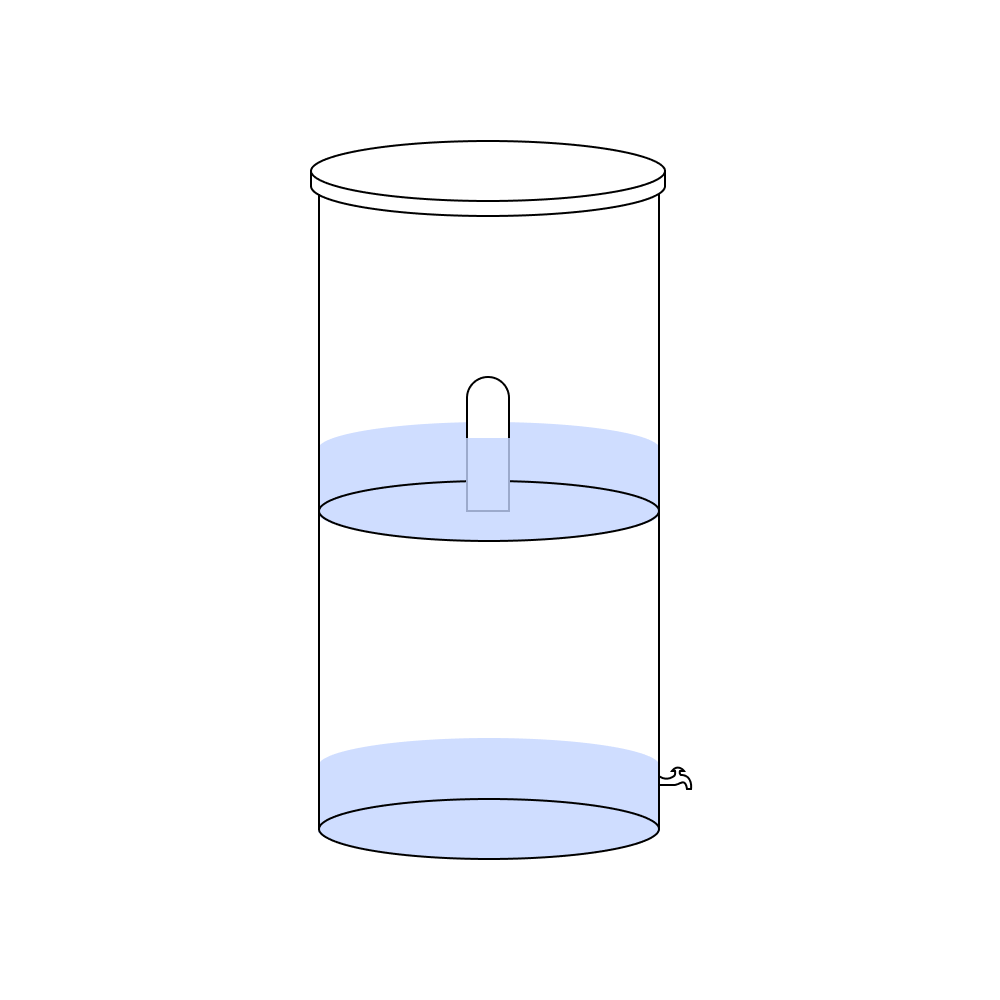
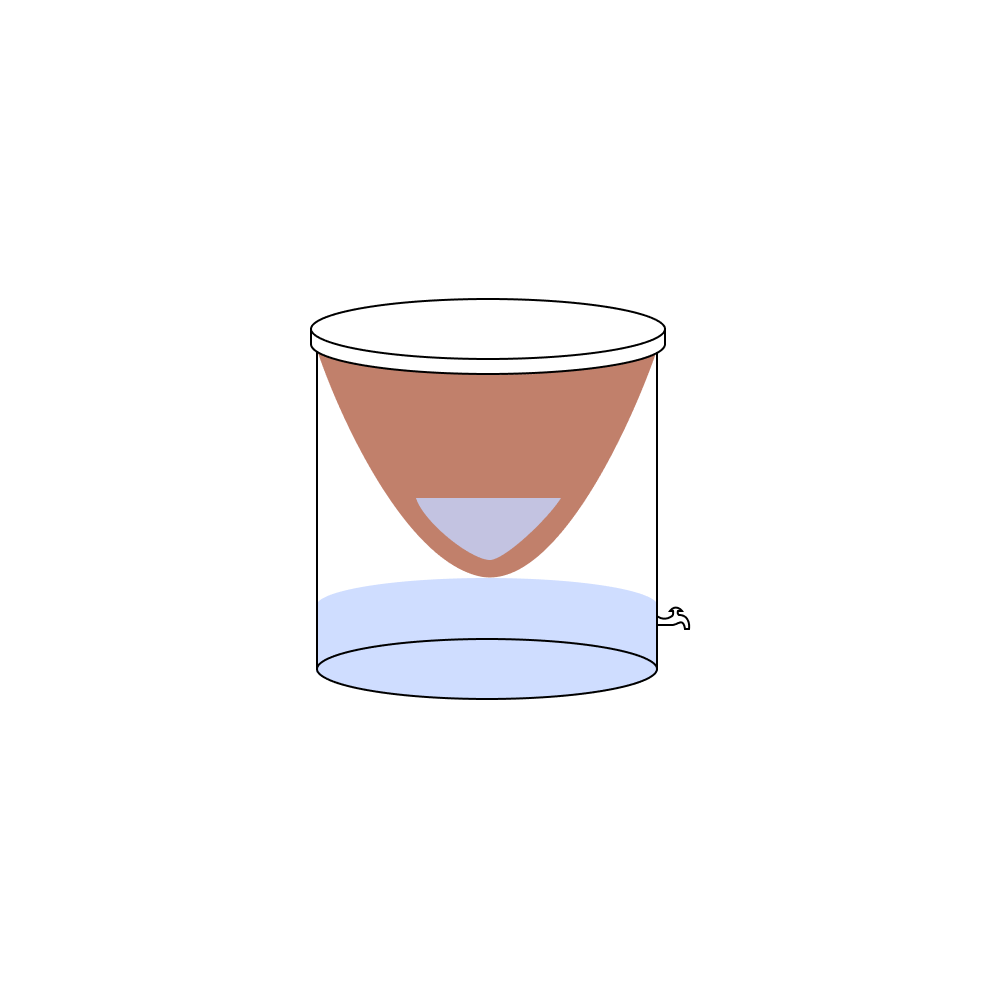
Enabling ease of use
The key issue with both of these products was the complicated maintenance they required. Each product came with a separate paper booklet with cleaning instructions, outlining different steps to complete at different points in time (weekly, monthly, etc.) We decided that a well-designed maintenance schedule would be key to ensuring that end-users benefited from using the filters regularly and safely.
We decided to prioritize three items in the design:
- Making the guides easier to follow by organizing each maintenance task by the timeline it requires — daily, weekly, etc.
- Changing the format of the guides from paper to stickers that adhere directly to the product, since paper can get wet, torn, lost, etc.
- Making it easy to record completion of each step using a marker that will wipe off the adhesive sticker each time a round of cleaning is required.
We settled on a monthly calendar that allowed users to mark completion of certain activities.
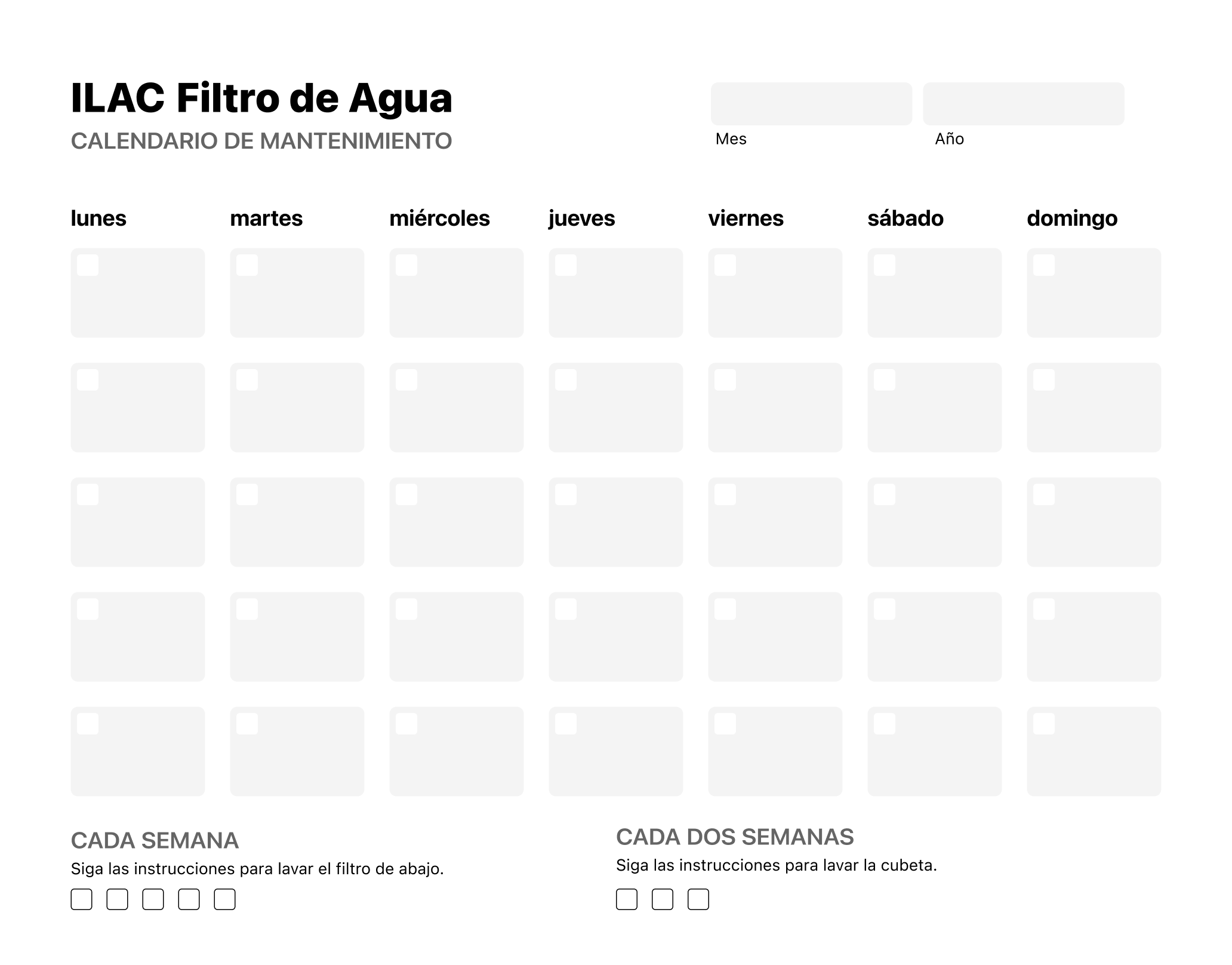
The complex nature of the steps prevented us from being able to completely eliminate the paper guide. However, we did re-design guides for both products, with a focus on improving clarity and cultural appropriateness.
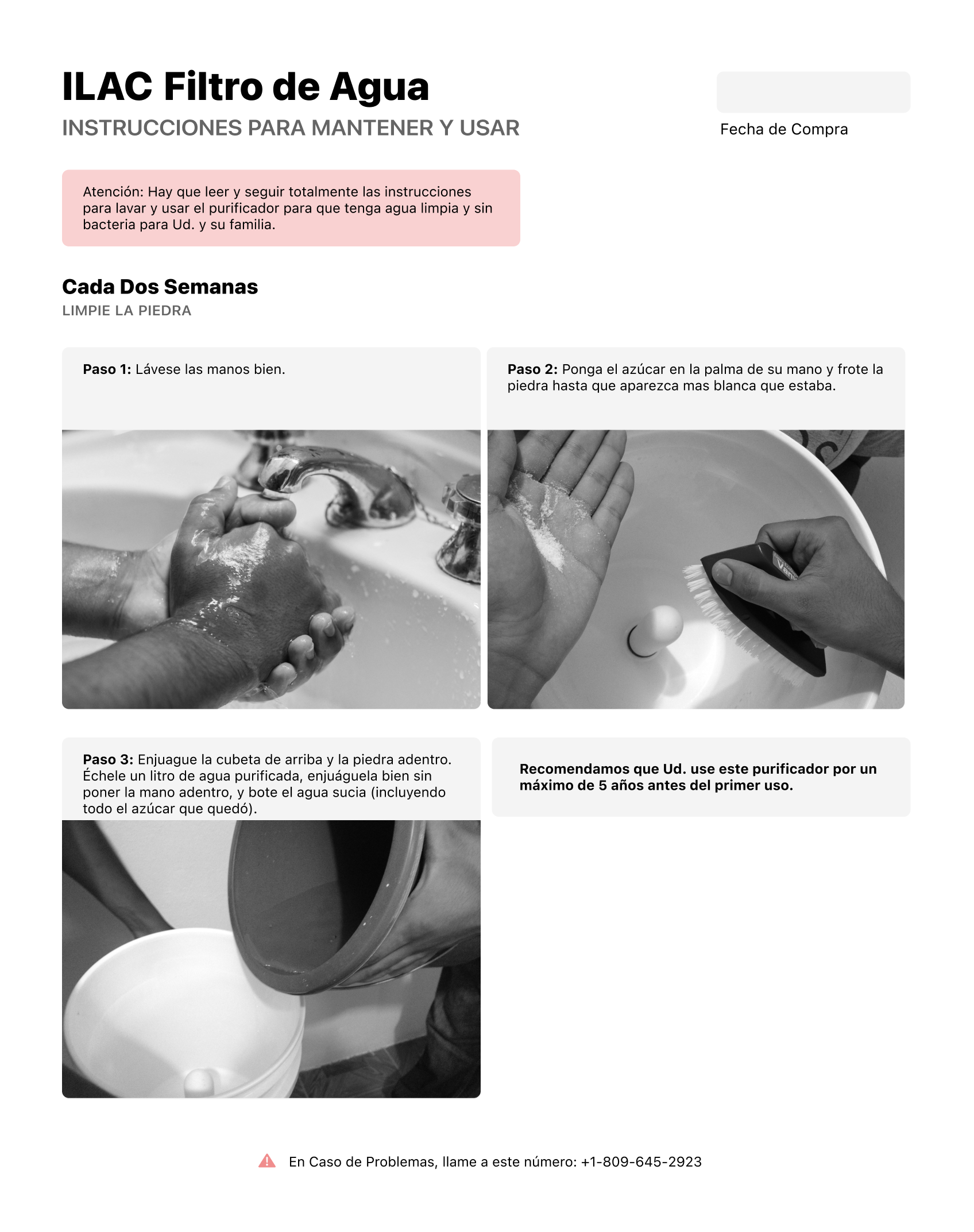
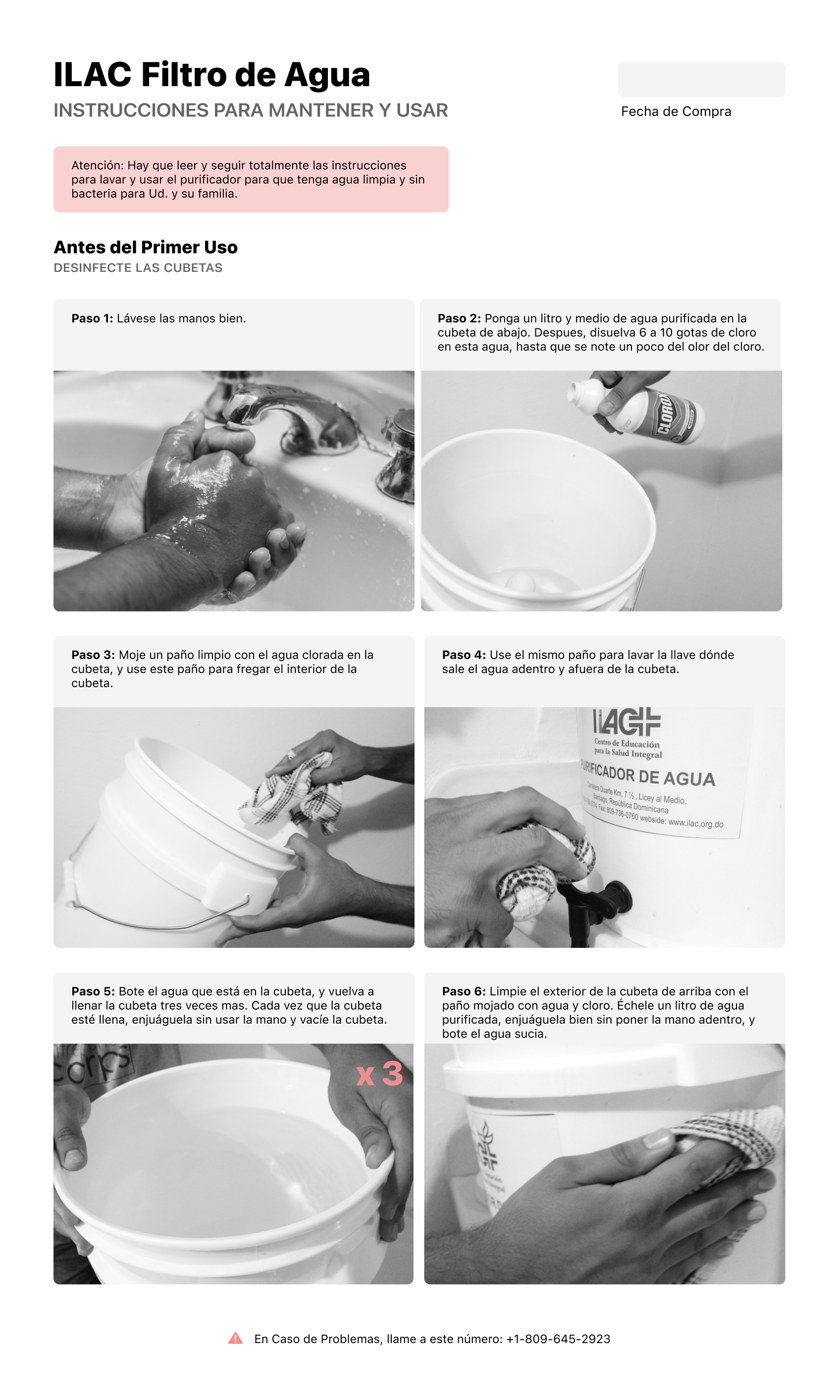
Implementation and Impact
This project allowed Soluciones Comunitarias to immediately provide their entrepreneurs with vetted purifiers for sale. In doing so, this project facilitated the sale of 13 purifiers. The timeline of this project did not allow us to conduct additional testing with users who had purchased these products, so that served as a final recommendation for a future scope of work. If I had the opportunity to continue the project further, I would like to conduct ethnographic research in users' homes, observing their usage and maintenance patterns. Interview questions might focus on changes in users' lifestyle, purchases, health and vitality, and social patterns since purchasing a filter.
Independent Follow-up
Following the conclusion of this project, I decided to revisit it independently to explore ways that the maintenance information for these water filtration/purification systems might be better designed, given that filling in the dates each month required a lot from users. From my previous design, I wanted to keep the information physically attached the product (i.e. a sticker on the side). However, I wanted to improve the design in two key areas. First, it needed to serve as a quick reference for users during the entire five-year lifecycle of their filter. Second, the design needed to tell users when the filter needed to be replaced (after five years of use).
I began by sketching out alternative options of displaying the information across time.
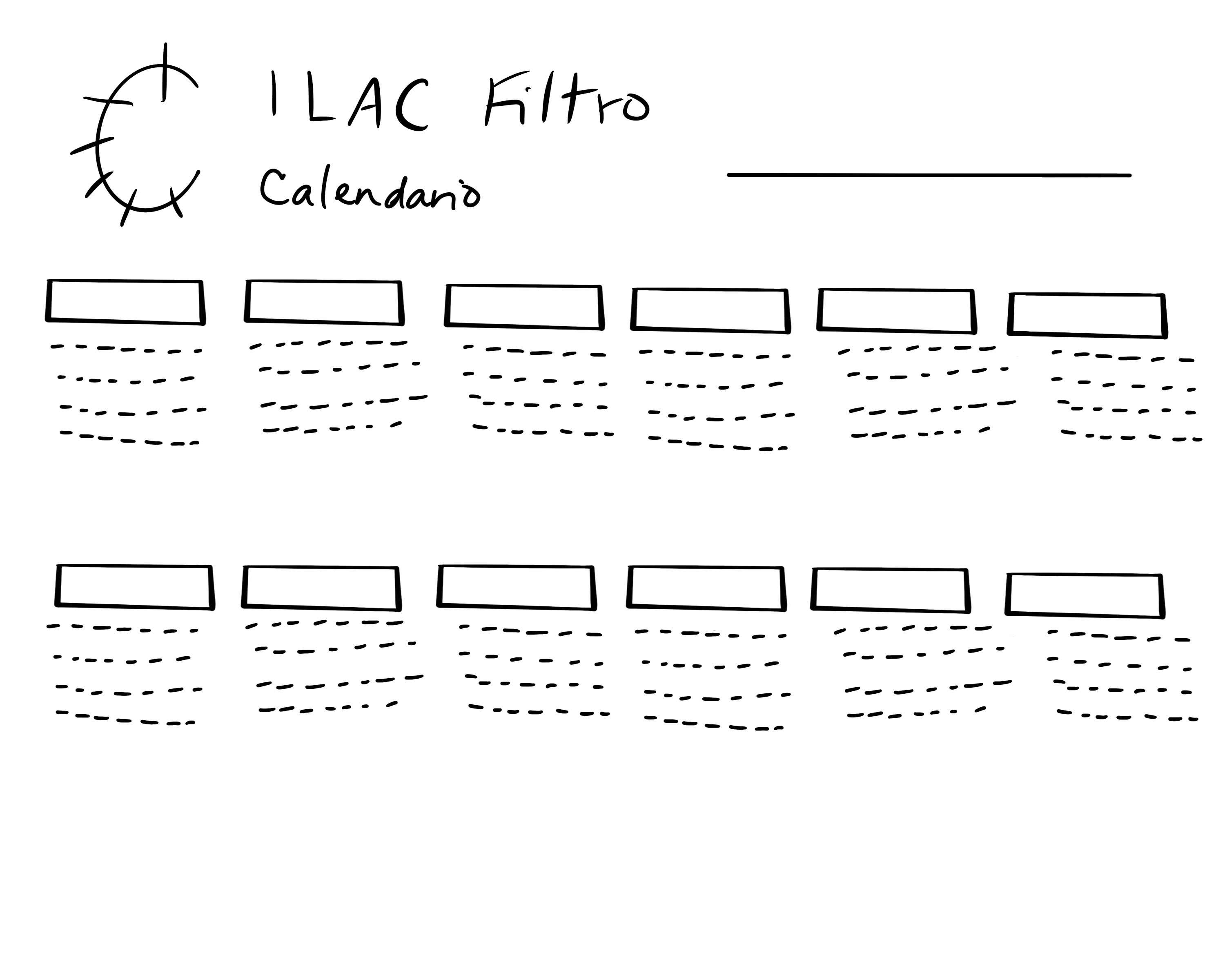
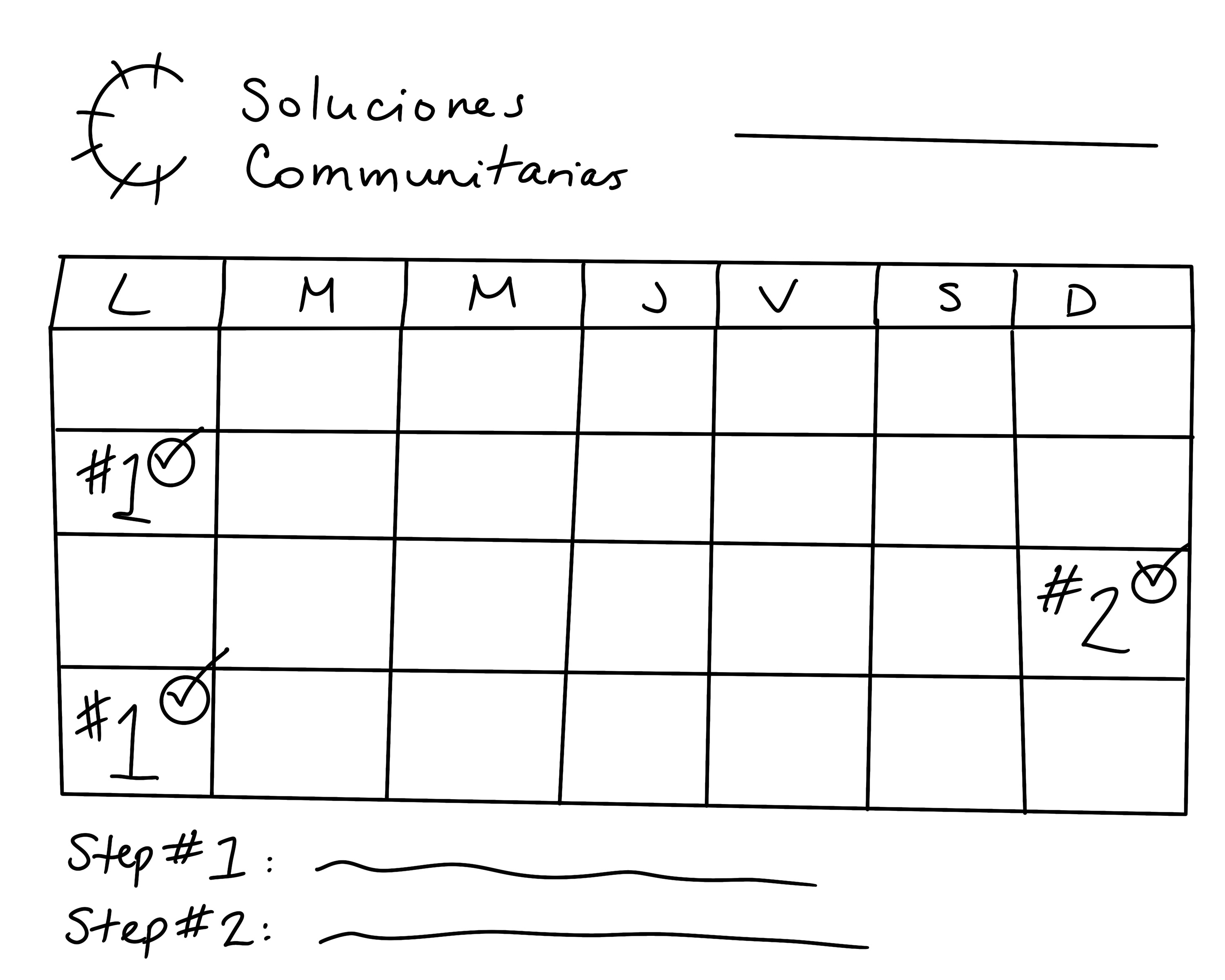
This design was complex for two reasons: First, the information would need to adapt to dates across several years, where dates fall on different days of the week each year. Thus, a standard calendar showing the dates in each month in a weekly format would not work. Second, the information would be displayed statically on a printed sticker, rather than on a changeable digital interface. Therefore, users wouldn't be able to alter the design beyond scribbling over it with a marker. I needed to design the information architecture in such a way that it didn't conflict with a user's mental model of a calendar despite not looking like most calendars.
Because maintenance work was required bi-weekly, I reasoned that an annual calendar format where weeks had prominence over months was the most appropriate structure. Because the filters were meant to be used for up to five years, I also included a space for users to record the date of purchase for their product. Because both products were manufactured domestically, I included the local number for users to reach the manufacturer in case of a problem. My plan was to highlight the dates in which the maintenance would be required, spaced out in bi-weekly increments.
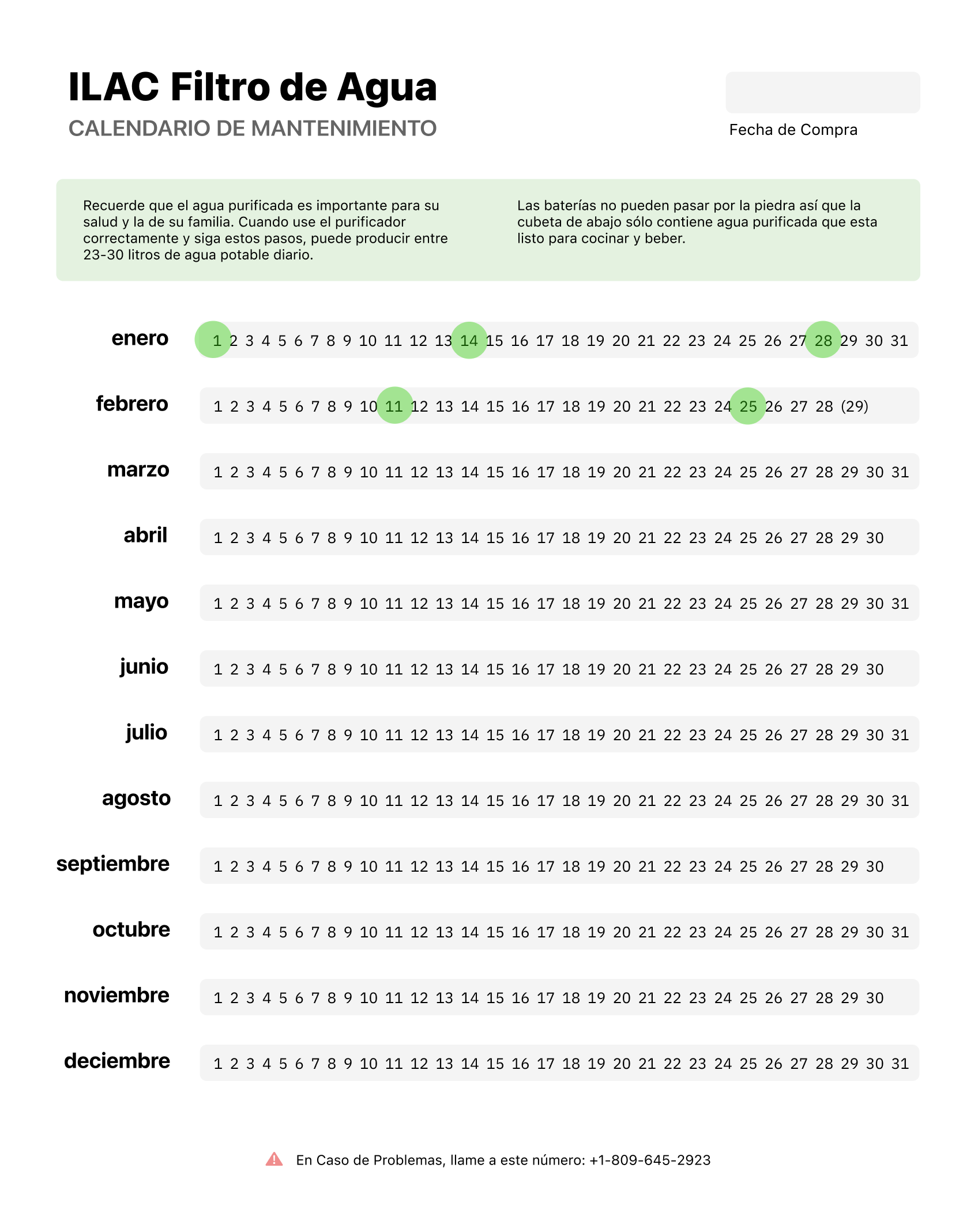
This posed a serious issue though: users could purchase a water filtration/purification system on any date! Furthermore, there was likely a gap of a few days between when users purchased the product and when they began using it. For those reasons, users needed a way to set their own start date for their maintenance schedule, without having to painstakingly fill in an entire year's worth of dates.
I re-examined what the user really needed through this design—and it wasn't tracking specific dates in a month or week. Rather, it was a way to track the time from each filter cleaning. As a result, I settled on a simple design that allowed users to track their maintenance schedule according to days of the week—a standard of time that is constant over months and years.
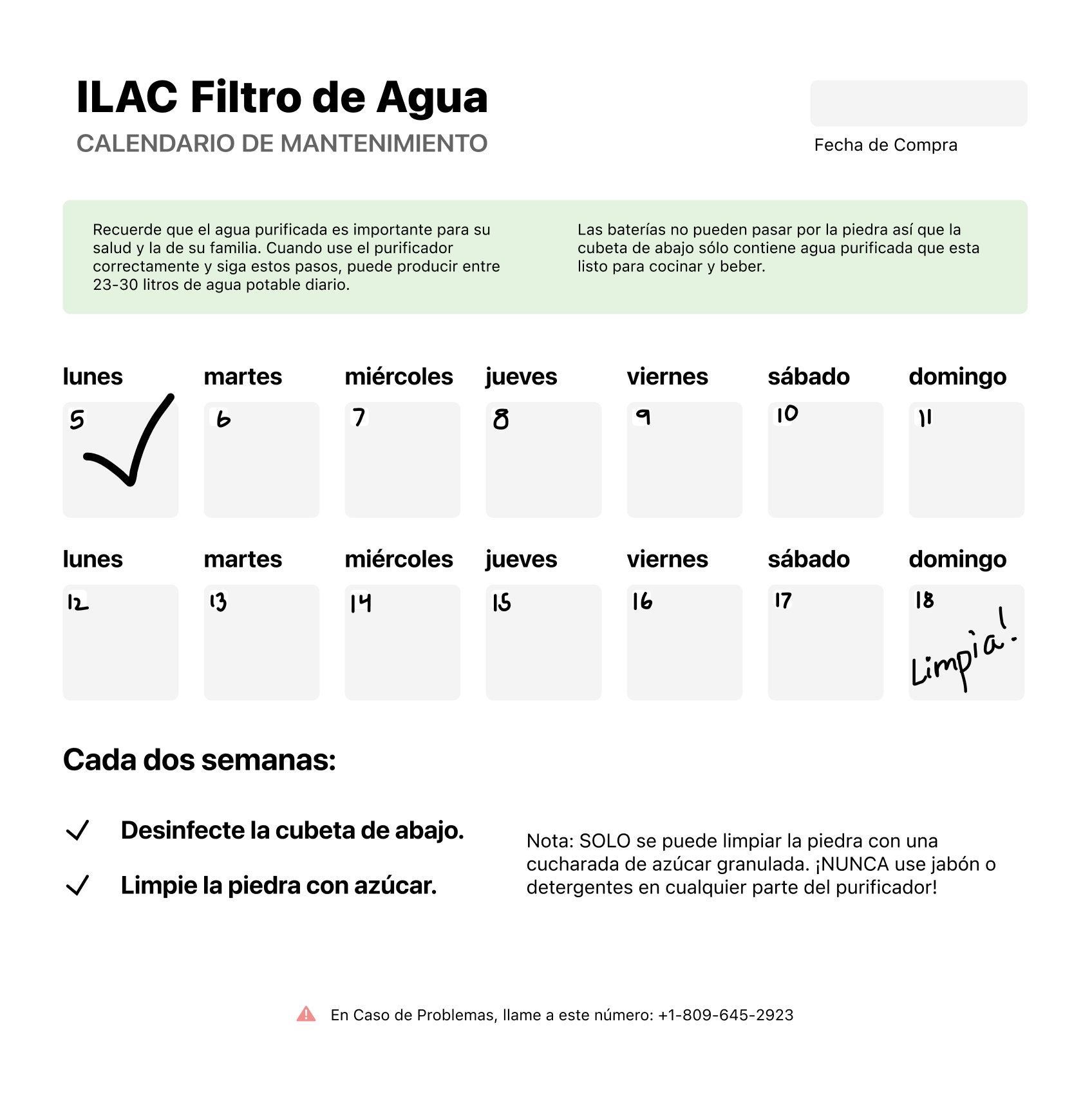
I really enjoyed working through the unique constraints and challenges this project presented, and applying my UX research and design skills to a non-digital medium. To learn more about my process, feel free to contact me.
Toggle dark/light mode